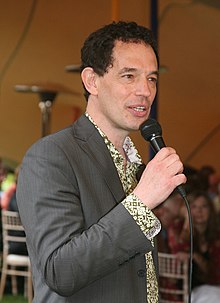In physical cosmology, cosmic inflation, cosmological inflation, or just inflation, is a theory of exponential expansion of space in the early universe. The inflationary epoch is believed to have lasted from 10−36 seconds to between 10−33 and 10−32 seconds after the Big Bang. Following the inflationary period, the universe continued to expand, but at a slower rate. The re-acceleration of this slowing expansion due to dark energy began after the universe was already over 7.7 billion years old.
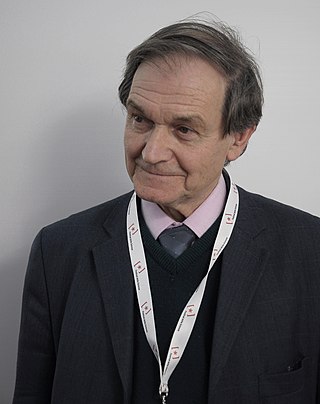
Sir Roger Penrose is a British mathematician, mathematical physicist, philosopher of science and Nobel Laureate in Physics. He is Emeritus Rouse Ball Professor of Mathematics in the University of Oxford, an emeritus fellow of Wadham College, Oxford, and an honorary fellow of St John's College, Cambridge, and University College London.
The ekpyrotic universe is a cosmological model of the early universe that explains the origin of the large-scale structure of the cosmos. The model has also been incorporated in the cyclic universe theory, which proposes a complete cosmological history, both the past and future.
The ultimate fate of the universe is a topic in physical cosmology, whose theoretical restrictions allow possible scenarios for the evolution and ultimate fate of the universe to be described and evaluated. Based on available observational evidence, deciding the fate and evolution of the universe has become a valid cosmological question, being beyond the mostly untestable constraints of mythological or theological beliefs. Several possible futures have been predicted by different scientific hypotheses, including that the universe might have existed for a finite and infinite duration, or towards explaining the manner and circumstances of its beginning.
The Big Bounce hypothesis is a cosmological model for the origin of the known universe. It was originally suggested as a phase of the cyclic model or oscillatory universe interpretation of the Big Bang, where the first cosmological event was the result of the collapse of a previous universe. It receded from serious consideration in the early 1980s after inflation theory emerged as a solution to the horizon problem, which had arisen from advances in observations revealing the large-scale structure of the universe.

Perimeter Institute for Theoretical Physics is an independent research centre in foundational theoretical physics located in Waterloo, Ontario, Canada. It was founded in 1999. The institute's founding and major benefactor is Canadian entrepreneur and philanthropist Mike Lazaridis.
A cyclic model is any of several cosmological models in which the universe follows infinite, or indefinite, self-sustaining cycles. For example, the oscillating universe theory briefly considered by Albert Einstein in 1930 theorized a universe following an eternal series of oscillations, each beginning with a Big Bang and ending with a Big Crunch; in the interim, the universe would expand for a period of time before the gravitational attraction of matter causes it to collapse back in and undergo a bounce.

George Francis Rayner Ellis, FRS, Hon. FRSSAf, is the emeritus distinguished professor of complex systems in the Department of Mathematics and Applied Mathematics at the University of Cape Town in South Africa. He co-authored The Large Scale Structure of Space-Time with University of Cambridge physicist Stephen Hawking, published in 1973, and is considered one of the world's leading theorists in cosmology. From 1989 to 1992 he served as president of the International Society on General Relativity and Gravitation. He is a past president of the International Society for Science and Religion. He is an A-rated researcher with the NRF.
The inflaton field is a hypothetical scalar field which is conjectured to have driven cosmic inflation in the very early universe. The field, originally postulated by Alan Guth, provides a mechanism by which a period of rapid expansion from 10−35 to 10−34 seconds after the initial expansion can be generated, forming a universe consistent with observed spatial isotropy and homogeneity.
The African Institute for Mathematical Sciences (AIMS) is a tertiary education and research institute in Muizenberg, South Africa, established in September 2003, and an associated network of linked institutes in Senegal, Ghana, Cameroon and Rwanda.
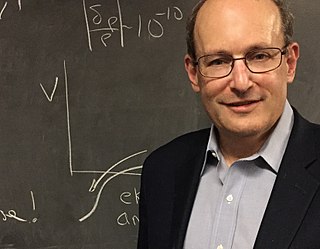
Paul Joseph Steinhardt is an American theoretical physicist whose principal research is in cosmology and condensed matter physics. He is currently the Albert Einstein Professor in Science at Princeton University, where he is on the faculty of both the Departments of Physics and of Astrophysical Sciences.

Dennis William Siahou Sciama, was an English physicist who, through his own work and that of his students, played a major role in developing British physics after the Second World War. He was the PhD supervisor to many famous physicists and astrophysicists, including John D. Barrow, David Deutsch, George F. R. Ellis, Stephen Hawking, Adrian Melott and Martin Rees, among others; he is considered one of the fathers of modern cosmology.
Burt Ovrut is an American theoretical physicist best known for his work on heterotic string theory. He is currently Professor of Theoretical High Energy Physics at the University of Pennsylvania.
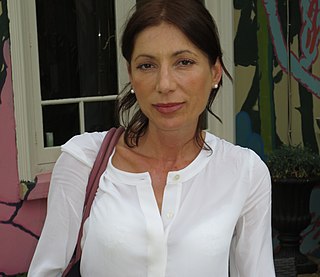
Laura Mersini-Houghton is an Albanian-American cosmologist and theoretical physicist, and professor at the University of North Carolina at Chapel Hill. She is a proponent of the multiverse hypothesis and the author of a theory for the origin of the universe that holds that our universe is one of many selected by quantum gravitational dynamics of matter and energy. She argues that anomalies in the current structure of the universe are best explained as the gravitational tug exerted by other universes.

Stephen William Hawking was an English theoretical physicist, cosmologist, and author who was director of research at the Centre for Theoretical Cosmology at the University of Cambridge. Between 1979 and 2009, he was the Lucasian Professor of Mathematics at Cambridge, widely viewed as one of the most prestigious academic posts in the world.
Raymond Laflamme, OC, FRSC is a Canadian theoretical physicist and founder and until mid 2017, was the director of the Institute for Quantum Computing at the University of Waterloo. He is also a professor in the Department of Physics and Astronomy at the University of Waterloo and an associate faculty member at Perimeter Institute for Theoretical Physics. Laflamme is currently a Canada Research Chair in Quantum Information. In December 2017, he was named as one of the appointees to the Order of Canada.

The University of Edinburgh School of Physics and Astronomy is the physics department of the University of Edinburgh. The School was formed in 1993 by a merger of the Department of Physics and the Department of Astronomy, both at the University of Edinburgh. The Department of Physics itself was a merger between the Department of Natural Philosophy and the Department of Mathematical Physics in the late 1960s. The School is part of the University's College of Science and Engineering.
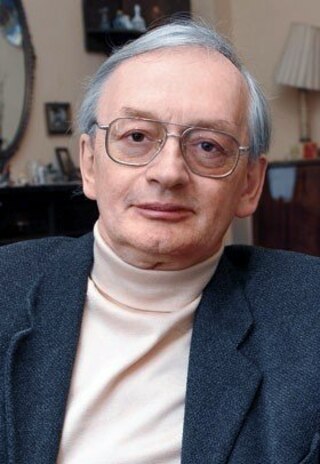
Alexei Alexandrovich Starobinsky was a Soviet and Russian theoretical physicist and cosmologist. He was a pioneer of the theory of cosmic inflation, for which he received the 2014 Kavli Prize in Astrophysics together with Alan Guth and Andrei Linde.
Ruth Durrer is a professor of Cosmology at the University of Geneva. She works on the cosmic microwave background, brane cosmology and massive gravity.

The James Clerk Maxwell Medal and Prize is awarded by the Institute of Physics (IOP) in theoretical physics. The award is made "for exceptional early-career contributions to theoretical physics." It was awarded every two years between 1962 and 1970 and has since been awarded annually. It is named in honour of James Clerk Maxwell.
